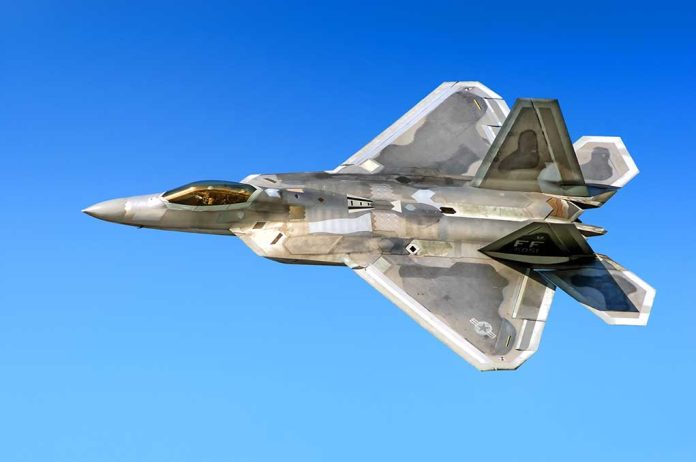🔴 Website 👉 https://u-s-news.com/
Telegram 👉 https://t.me/usnewscom_channel
Russia launches its most devastating aerial assault since the war began, accusing Ukraine of deliberately escalating attacks to sabotage peace negotiations while demanding Kyiv surrender its NATO ambitions and territory.
Key Takeaways
- Russia launched a record 355 drones and nine cruise missiles across Ukraine in what officials call the largest air attack since the 2022 invasion, killing at least 12 civilians.
- Moscow claims Ukraine has intensified drone strikes against Russian territory, with the Russian defense ministry reporting the destruction of 2,331 Ukrainian drones between May 20-27 alone.
- The escalation comes amid the first direct Russia-Ukraine peace talks in three years, with Russia demanding Ukraine abandon NATO membership ambitions and cede territory.
- President Trump has threatened sanctions against Russia while expressing concern that Putin’s aggressive actions could lead to Russia’s downfall.
- Both sides conducted their largest prisoner exchange to date, swapping 1,000 people each, suggesting some diplomatic channels remain functional despite heightened tensions.
Massive Russian Air Attack Signals Escalation
Ukraine experienced its most devastating aerial assault since Russia’s full-scale invasion began in February 2022, with Moscow launching an unprecedented barrage of 355 drones and nine cruise missiles targeting multiple regions, including the capital Kyiv. The attacks left at least 12 civilians dead and dozens more injured as residential areas, energy infrastructure, and other civilian targets were hit. Ukrainian officials have characterized this as a deliberate campaign to terrorize the civilian population rather than achieve legitimate military objectives. The scale of the attack suggests a significant escalation in Russia’s aerial campaign, coming at a time when peace negotiations have shown minimal progress.
“The last three nights were absolutely sleepless. One of the nights I spent in the metro station sheltering from the Russian ballistic missiles. The other two, I slept at home but I was regularly woken up by the explosions. They were very loud and of course it was very chilling,” said Olena Halushka, Ukrainian activist.
Russia’s defense ministry has justified the massive assault as a direct response to Ukrainian drone activities, claiming Kyiv is being supported by certain European countries in what it describes as “provocative steps” designed to undermine peace efforts. Moscow alleges that its military has intercepted and destroyed thousands of Ukrainian drones in recent days, asserting that the Ukrainian government is deliberately sabotaging negotiations by escalating tensions through targeted strikes on Russian territory. This reciprocal blame game has further complicated an already fragile diplomatic environment, pushing both sides further from potential compromises.
Ukraine-Russia war: Warning over Trump’s failed peace talk plan after Putin launches largest drone strikehttps://t.co/AlsrOB9X7p
— The Independent (@Independent) May 26, 2025
Russian Demands and Diplomatic Impasse
Russia’s approach to peace negotiations has remained rigid, with Moscow continuing to insist that Ukraine must abandon its NATO membership aspirations and cede territory currently under Russian control. The Kremlin has rejected proposals for a 30-day unconditional ceasefire, signaling its intent to maintain military pressure during talks. Russian Foreign Minister Sergey Lavrov has suggested Istanbul as a potential location for future discussions, but concrete progress remains elusive as Russia continues to prepare a document outlining its peace terms without yet presenting it to Ukrainian officials.
“Kyiv, with the support of some European countries, has taken a series of provocative steps to thwart negotiations initiated by Russia,” said the Russian defence ministry.
President Trump has expressed growing frustration with Putin’s actions, threatening increased sanctions and suggesting that Russia’s current trajectory could lead to its downfall. This marks a significant moment in the administration’s approach to the conflict, with Trump appearing to take a firmer stance against Russian aggression than some had anticipated. Despite these tensions, there have been positive diplomatic developments, including the largest prisoner exchange between the two nations since the conflict began, with each side swapping 1,000 detainees. This exchange represents a rare moment of cooperation amid deteriorating relations.
Ukrainian Perspective and Call for Action
Ukrainian officials have consistently rejected Russia’s characterization of the conflict, maintaining that Moscow’s attacks are deliberately targeting civilian infrastructure rather than legitimate military objectives. They point to the extensive damage to residential areas, hospitals, and energy facilities as evidence of Russia’s true intentions. Ukrainian President Volodymyr Zelenskyy’s administration has repeatedly called for stronger international action, including enhanced military aid packages and tougher sanctions against Russia, emphasizing that diplomatic overtures without meaningful pressure on Moscow will prove ineffective.
“We need to end this eternal waiting — Russia needs more sanctions,” said Ukrainian President Volodymyr Zelenskyy’s chief of staff Andriy Yermak.
Ukrainian activists have expressed skepticism about Russia’s sincerity in peace negotiations, suggesting that Moscow’s actions speak louder than its diplomatic rhetoric. There are growing concerns that Russia aims to pressure Ukraine into capitulation by instilling fear among its civilian population through sustained aerial bombardments. Ukrainian officials argue that without increased international support and pressure on Russia, the current diplomatic efforts are unlikely to yield meaningful results. They emphasize the importance of maintaining global solidarity with Ukraine to counter what they describe as Russia’s strategy of attrition and intimidation.
One person was killed and parts of Ukraine were under air raid alert for nine straight hours, while authorities say Russia launched a barrage of 273 drones.https://t.co/1V2VFgI2HU
— The Moscow Times (@MoscowTimes) May 18, 2025
Uncertain Path Forward
As aerial attacks continue from both sides, the prospects for sustainable peace appear increasingly remote. The conflicting narratives from Moscow and Kyiv about responsibility for the escalation have created an environment of deep mistrust that complicates any negotiation process. Russia’s insistence on Ukrainian territorial concessions remains a fundamental roadblock, as Kyiv continues to maintain that its sovereignty and territorial integrity are non-negotiable. Without significant shifts in these core positions, diplomatic efforts may continue to yield limited results despite the administration’s focus on bringing this conflict to a resolution.
“I think it’s very important that our partners do not actually care or seriously treat what Russia is saying because Russians are lying. They are just inventing disinformation, they are inventing new reality and they are trying to sell this new reality to our partners,” said Olena Halushka, Ukrainian activist.
The escalating aerial campaigns from both sides suggest that military activities are being used as leverage in the negotiation process, creating a dangerous dynamic where violence and diplomatic overtures exist in parallel. International observers remain concerned that without a breakthrough in talks, the conflict could intensify further, potentially drawing in additional international actors and expanding beyond its current boundaries. As President Trump’s administration continues to navigate this complex diplomatic landscape, the path toward de-escalation remains fraught with challenges and uncertainty for all parties involved.

